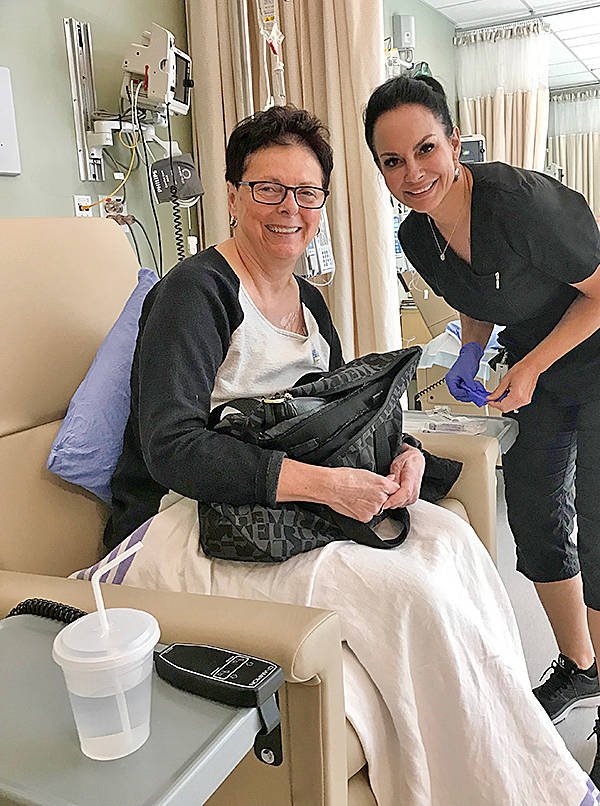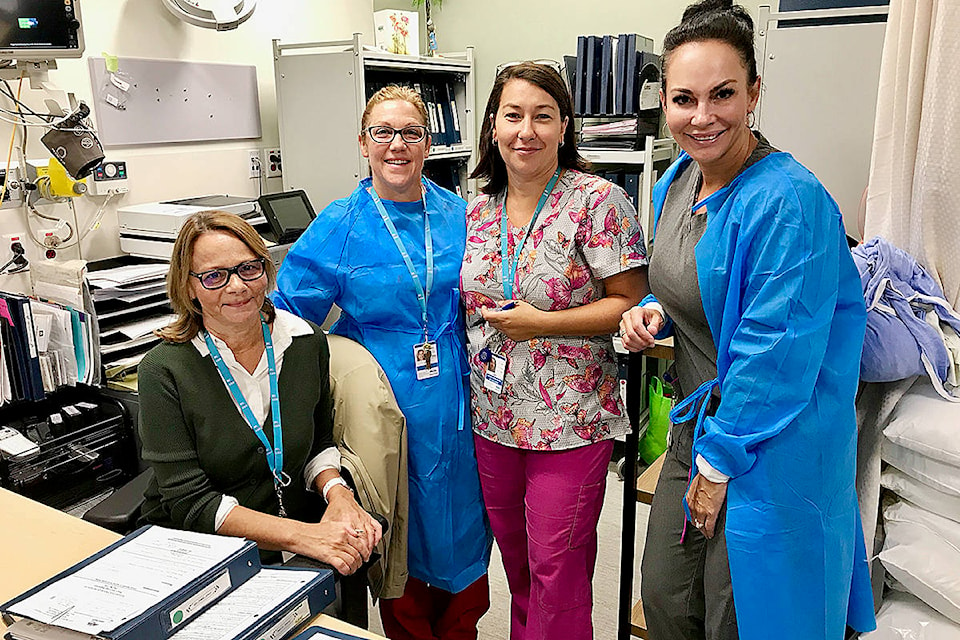By Susie Moscovich
Special to the Mirror
After the initial shock of hearing “you’ve got breast cancer,” my mind was filled with so very many questions.
What cancer was and the basic treatment outline was very patiently explained to me by my doctor. Being married to a physician also helped keep my thoughts in perspective.
Then I went to Google where I found plenty of information on breast cancer treatment. But what I specifically wanted to know was: What is the actual procedure of getting chemotherapy? How is it administered? Is it administered by a physician or a specially trained nurse? Those specifics were harder to find. I was told what drugs I would be receiving and what day I would be getting them.
However, what I was really interested in and wanted to know was exactly how does one “get chemo?” I did find out that it was done in a hospital setting and that it would be administered intravenously.
However, would I be in a hospital bed in a room or on gurney in a hallway? Would I be alone or could my family and friends be with me? How long did it take, etc.?
I distinctly remember how frightened I was the first time I went to the Campbell River hospital for my orientation at the Wellness Centre’s Cancer Care Unit. I decided, then and there, that after my treatments were finished, I would write an article outlining the actual method of “getting chemo” based on my experience at the North Island Hospital Campbell River and District.
For those of us residing in Campbell River, our cancer care is guided by either the BC Cancer centre in Victoria or Vancouver. Your GP will refer you to an oncologist in either city who will then determine your method of treatment. This oncologist then recommends your treatment to a GP in Campbell River with special training in oncology. They, together with the local cancer care team nurses, will set out your specially-tailored chemo treatment.
Before each chemo infusion, you will need to get blood work done. Preferably 24 hours before your chemo because the strength and mix of your particular drug cocktail is dependent on the results of your blood test and your weight. Appointments with your GP oncologist for the day before chemo will be set up for you by reception at the Cancer Care Unit of the wellness centre.
Upon entering the Cancer Care Unit at the Campbell River hospital, one is struck by how bright and cheerful it is. The room faces onto a large atrium containing a garden, with large green leafy plants, which runs almost the entire length of the room. It is carefully tended by the staff and shows it. In the room are six recliner chairs (there is also a treatment stretcher unit/room off to the side). Each chair is a unit with its own IV pole with all the attachments needed. The units can be curtained off, if needed, for privacy. These chairs face the atrium and the nurses station so that one never feels alone and each patient is always under the watchful eyes of the nurses on call.
Once ensconced in your recliner, you are covered with a heated blanket and shown how to work the control for the chair (the hospital has free wifi, so bring your devices).
Then a nurse pulls over a trolley to your chair and lays out all the equipment needed to insert your IV through which you will be administered your particular mix of chemotherapy.
I would like to digress here. Most of us know about IVs, a peripheral intravenous line is a small, short plastic catheter that is placed through the skin into a vein. What I would like to add here, is that there are additional options which can be discussed with your doctor and nurse.
Under the heading “central lines,” there are various ways of getting the drugs into your system.
Chemo drugs are notoriously hard on vessels. So if you have veins that have been already damaged in some way, you might want to discuss getting an intravenous port or some other form of central line with your healthcare team. This would negate possibly having to get stuck multiple times with needles in search for a viable route to administer your chemo drug.
One poke into a central line and you’re done. Some of these options can’t be decided at the last minute because they have to be implanted (very short and painless procedure) by your surgeon.
One you are hooked up to your chemo, you just lay back, have a snooze, watch a movie on your device, etc. The CR Hospital volunteers come around every hour and offer coffee, tea, juices and cookies. There are also massage therapists who come around every now and then to massage your neck and feet. The side effects of most chemo drugs don’t kick in until the third day of your cycle, so relaxing in your recliner can be one of the more positive aspects of your chemotherapy journey. I know for me, it definitely was.
I would also like to add that another benefit of being treated in the CR Hospital is that the nurses, doctors and volunteers are all local. If you strike up a conversation with one of them, you will find some sort of connection, maybe your kids went to school together, or your grandchildren take the same dance classes or play a sport together, etc.
It’s basically, your community taking very good care of you.
Like us on Facebook and follow us on Twitter

